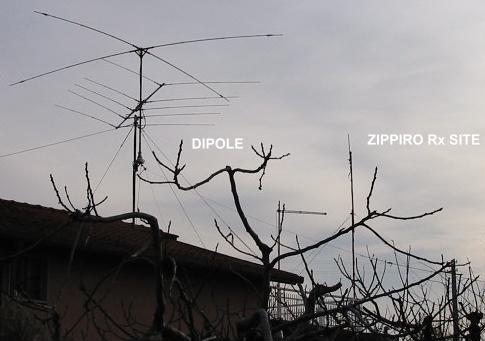

Perché le prove vengono condotte in 40 m ?
Sui test condotti su antenne è facile errare e condizioni amatoriali possono ulteriormente incrementare gli errori.
Antenne per onde corte non possono , quindi , essere giudicate con una semplice misura come per le antenne vhf e superiori.
La vicinanza della "terra" , le riflessioni ionosferiche sono fattori assolutamente non trascurabili.
Si è scelto di valutare la Zippiro sui 40 m per diversi motivi :
Why tests on 40 m band ?
It isn't simple testing amateur antennas and errors occur quite easily and sometimes circumstances can be misleading . Amateur facilities can increase error probability.
So, short wave antennas can't be evaluated just by a simple measure as for VHF ( and over ) antennas.
"Ground "proximity and ionospheric reflections aren't absolutely secondary factors.
Zippiro was tested on 7mhz ( 40 m band ) due to many reasons :
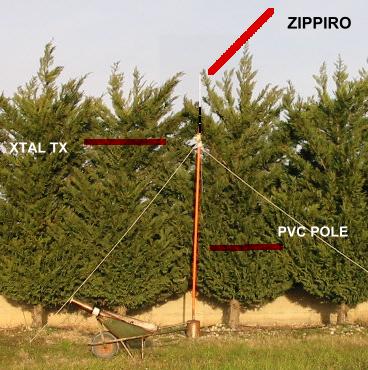
Il rumore tipico di banda è alto e comunque vi è sempre un " platfond "consistente ed alto è il rumore artificiale ovvero il Qrm "man-made" e le interferenze dirette o indirette (intermodulazione ed altro ) sia broadcasting che OM dovute alla ristrettezza di banda in zona ITU 1 ed alla alta frequentazione amatoriale.
Basso è il rapporto altezza / lunghezza d'onda , ovvero altezza molto modesta dell'antenna , in relazione alla lunghezza d'onda ( 7 mhz = 42 m ) , tipica di una condizione cittadina. Il che per antenne "normali" è un ulteriore fattore negativo che influenza fortemente l'irradiazione su bassi angoli ( essenziali per il Dx ).Tali condizioni ,quindi , riducono fortemente la possibilità di fare Qso eclatanti e miracolosi ed il QSO, magari Dx , bisogna guadagnarselo.
Standard Noise is high on this band and anyway a solid "platfond" of natural noise is always present . At the same time artificial ( "man-made ") Qrm is high ,as well as direct or indirect (crossmods)interferences_Broadcast and Amateur bands , at least in ITU zone 1 , are very close and a quite narrow band assigned to amateurs activity ( just 100 KHz ).Of course frequences are overcrowded in Europe .
The antenna height / wave-lenght ratio isn't favourable . This is a quite common handicap in urban areas (7 MHz = 42 m ) . "Standard " antennas will be affected by this negative element , in fact low radiation angles will be lost or signals to / from antenna will be weakened. So, it becomes quite difficult to make miraculous Dx-Qso and a good Dx on this band isn't so easy .
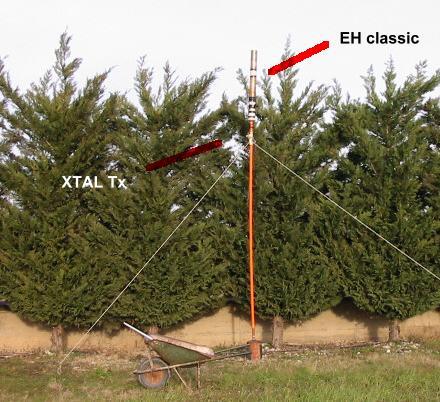
Al contrario ,è improprio valutare su bande HF superiori tale antenna (e vale anche per tutte le altre antenne piccole ),almeno nella fase iniziale .
La propagazione aiuta eccessivamente anche una antenna poco efficiente e in 10m , ad esempio , è possibile persino fare Qso con un carico fittizio e 100 w. Quindi , certe ingenuità vanno evitate se si vuol evitare di incorrere in abbagli o dare per risolutiva questa o quella modifica .E' evidente che fare Qso con gli USA in 40m non ha la stessa valenza che fare gli stessi collegamenti in 15m .
On the contrary , it isn't correct to test " Zippiro " (as well as other short antennas ) on other HF bands (high bands) , at least at the beginning of the antenna evaluation session .
Propagation helps too much , even low efficiency antennas . On 10m band sometimes it is possible to make Qso using 100w and a ...dummy-load !!
So ,these errors and misleadings must be avoided to evaluate correctly a short antenna and to attribute the right value to "the last mod " . It is obvious : intercontinental Qso made on 40 m haven't the same value as for e.g. 15m .
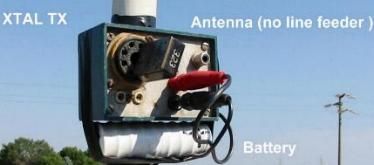
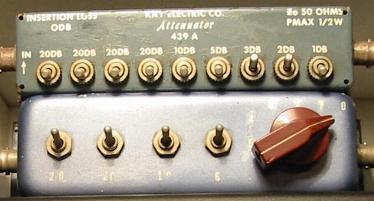
L'aver dimestichezza col QRP aiuta a valutare meglio e l'antenna e il QSO appena fatto . Lo scrivente ha lavorato in QRP con 2 watt valvolari (Tx ed Rx ) 101 paesi Dxcc una trentina di anni fa senza usare direttive ,quindi una certa esperienza è stata acquisita, aggiungendo successivamente , l'esperienza professionale ( ufficiale di radiocomunicazioni ) con Qso intercontinentali su navi oceaniche "world-wide" usando a volte potenze Qrp ( per la disperazione degli operatori di radio-costiere !)
A QRP experience will help for testing the antenna "on the air". Nino, iz7 DJR worked 101 DXCC countries about 30 years ago using 2 watts and no-gain antennas(call : i7zcz ).
Next, professional experience on long haul communications has to be added : radio officer on board of world wide oceanic ships , using sometimes QRP powers to test propagation ...patience and skill of coast radio stations operators...( HI ! )
